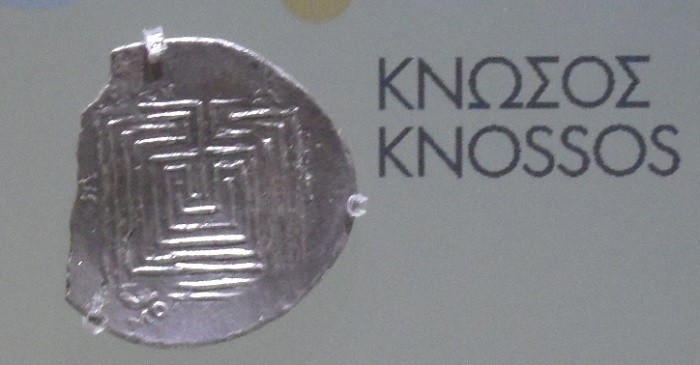
Join me in another flashback to my early backpacking trip across Crete, when I camped in the Minoan ruins of Falassarna and heard whispers from the past.
NOTE: Of course, Thor and I had to make another trip to Greece, as he’s fallen as much in love with the islands as I am. This time, in addition to other island-hopping, I wanted to return to Crete after 37 years. My first months-long trip was as a hippie backpacker, camping in the ruins and falling under the spell of the mysterious, vanished Minoan culture. This time, I got to introduce Thor to “glorious Kriti” and research more settings for my novel-in-progress, THE ARIADNE DISCONNECT. This new blog series started October 19, 2019, and will continue every Saturday.
You can hardly escape the concept of the labyrinth on Crete (the motif of the ancient coin above), and most of the palace ruins have a mazelike structure. The famous myth of Ariadne and the Minotaur took place in the Palace of Knossos, where King Minos (Ariadne’s father) kept the bull-headed monster. Ariadne, most likely a priestess of the labyrinth, held the key to its twists and turns. The footings and reconstructions at Knossos are the most famous of the palace/ritual sites, but others such as Phaestos have a similar structure. We’ll visit both sites in upcoming blog posts, but for now a glimpse of Phaestos:
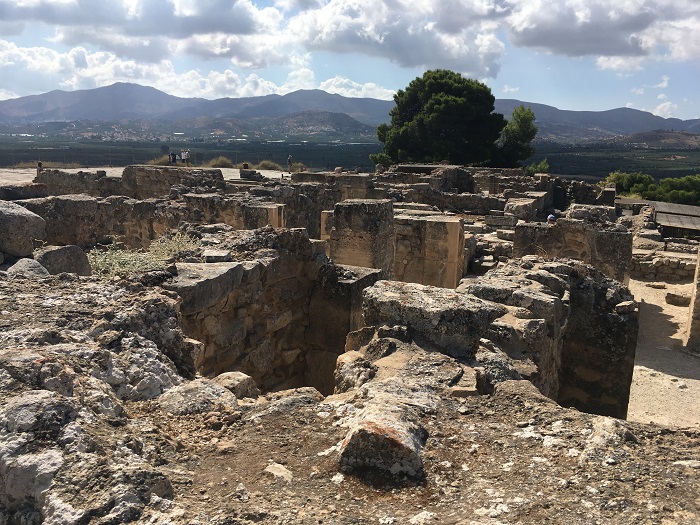
I often find inspiration in wild places, and where I felt the deep pull of the labyrinth most profoundly on my first trip was on the relatively deserted west coast of the island, at the site of the ancient city of Falassarna. Again, forgive the poor quality of the old photos….

My travel-partner Jim and I hiked to its beautiful seaside setting, enjoying the last of spring’s crimson wild poppies, fading after Easter.
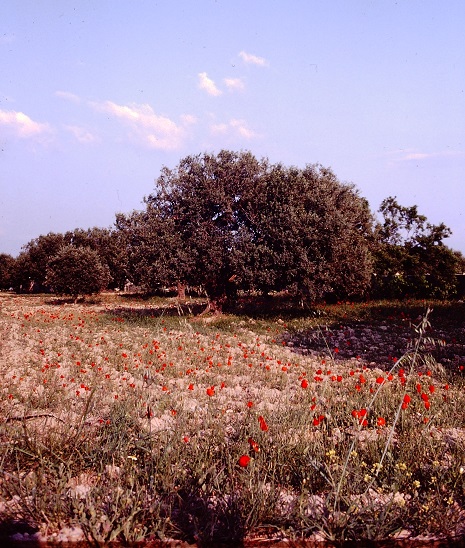

I couldn’t get enough of Falassarna’s beach, an endless stretch of white sand with brilliant turquoise shallows shading to deep purple-blue sea. I took many swims in the bracing, cold water, so clear that it felt like I was floating in air. It seemed to cleanse me from the inside out as I frolicked in the buoyant, brisk water and flung up drops to sparkle in the sunlight.
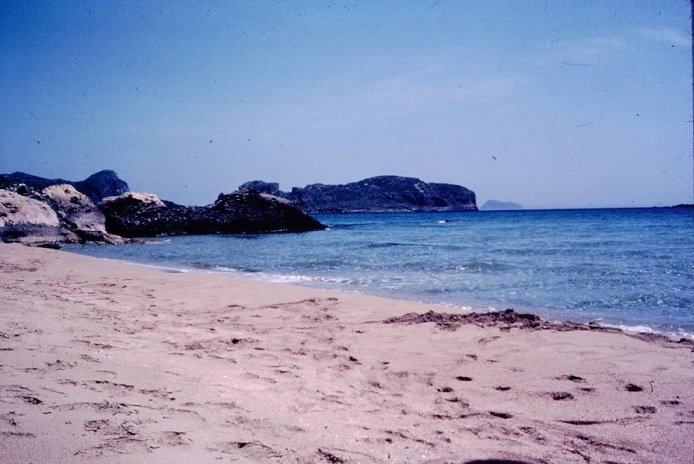
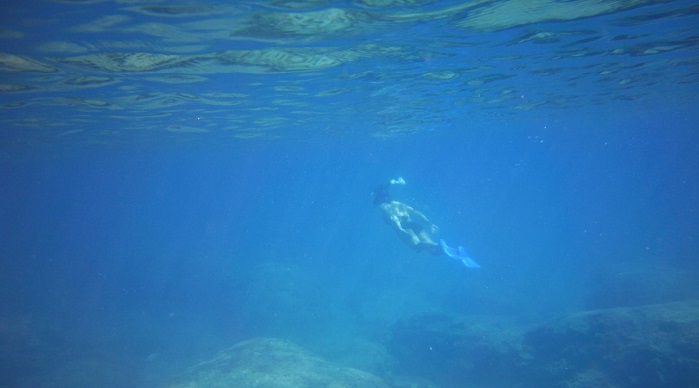
Jim and I camped at the foot of rugged cliffs, and saw no one for days except a goat herder who politely asked us to move our tent from his patch of grazing grass and onto a sheltered, sandy spot among the boulders. We explored the partially-excavated ruins of what might have been one of Homer’s fabled 99 cities of the ancient Minoans. We were free to wander the ruins exposed by a French archaeological project that apparently had run out of funds to continue. Atop the steep cliffs overlooking the site, we found the narrow entrance to a cave, with pottery fragments.
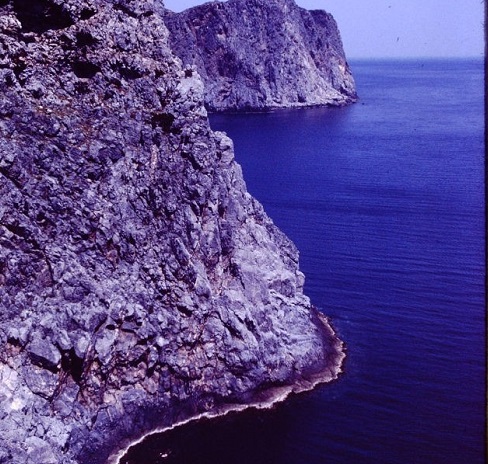
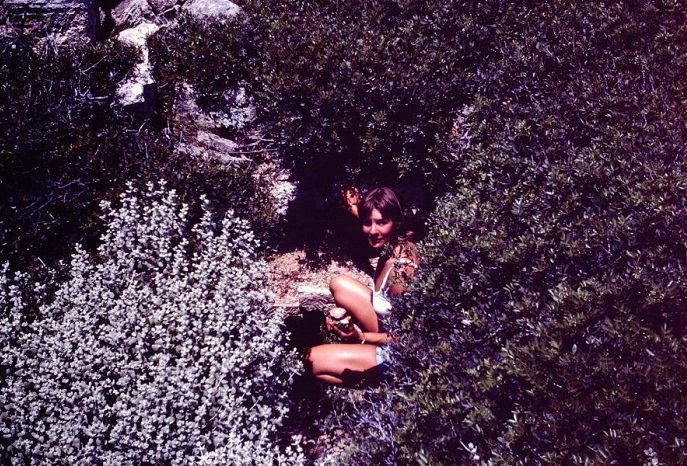
This ancient settlement of weathered white stone seemed almost to be carved from the bones of the rugged crags rising from the sea: encircling walls, empty rooms, courtyards with the circular forms of dry fountains, stairways climbing to nowhere but sky.
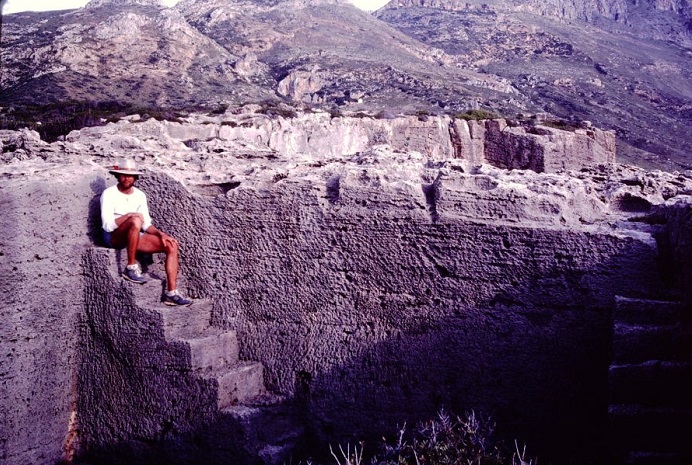
Later, meditating in the ruins beside the fountain gone dry, I felt the ghosts of ancient inhabitants stirring around me and heard the faint song of pipes. Here is a scene from The Ariadne Connection that tries to capture that feeling:
They dropped lower, down a narrow cut, then suddenly out onto an open plateau looking over the distant sea. Peter caught a sharp breath. Before him a white stone maze glimmered under the rising moon—an expanse of twisting curves, convoluted angles, tortuous spirals carved into the rocky earth. A labyrinth of silver and shadow.
He blinked. It was the ruins of an ancient town, broken walls and twisting alleys and fragments of stairways climbing toward the stars, all hacked seemingly of one piece from the white stone.
She led him in silence down the deserted narrow passages between walls, threading the shadowy maze inward. A whisper surged and ebbed in his ears—voice of the sea echoing in an empty spiral shell. Peter was lost, wondering if he’d wander the twisting paths forever.
Ariadne ducked through a dark gap, climbed the stairs carved into the side of a wall, and sat atop it. He sat beside her, looking out from the center over the glimmering stone tracery.
“What is this place?” It came out a whisper.
She lifted her palms. “No one knows. We think one of the ninety-nine fabled cities of the ancient Minoans.”
“And Ariadne. Her labyrinth?”
“Who can say? There is power here.”
Ariadne must find a way to harmonize the opposing forces, including male and female energies, new technology and ancient ways. Fearing the oppression of men, including her tyrant father, she finally learns to trust former smuggler Peter, who reminds her of the concept of Teilhard de Chardin’s noosphere. It posits a field of consciousness of all living beings on earth, like the voice of the Earth Mother whispering from the labyrinth. Peter suggests that perhaps the crimes against life perpetrated by those drunk on power may be due to the fact that those people are trapped in static and can’t hear the voice of the noosphere, the voice of the earth.
It was hard to leave such a magical place, with its whispers of the past. And today, as we all suffer under the nightmare of corrupt government, wannabe and actual dictatorships grabbing for power across the globe with unnerving similarities to the dystopia of my novel, I’m hearing more echoes. Will we learn from the past, or be doomed to repeat destructive cycles? I’d like to believe, as Peter says elsewhere in The Ariadne Connection, that some natural beauty at least will endure after the wars and warriors are long gone.
So I summon my last evening at Falassarna as I lingered in a stone cave, looking out into the sunset while silhouettes of two fishermen laid out nets from their small boat. Glorious Kriti, thank you for your gifts of inspiration. Chairete! Rejoice!
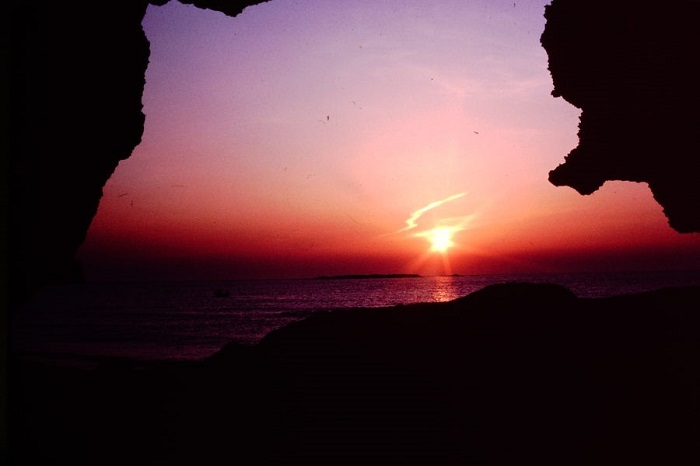
*****
You will find The Rambling Writer’s blog posts here every Saturday. Sara’s latest novel from Book View Cafe is available in print and ebook: The Ariadne Connection. It’s a near-future thriller set in the Greek islands. “Technology triggers a deadly new plague. Can a healer find the cure?” The novel has received the Chanticleer Global Thriller Grand Prize and the Cygnus Award for Speculative Fiction. Sara has recently returned from another research trip in Greece and is back at work on the sequel, The Ariadne Disconnect. Sign up for her quarterly email newsletter at www.sarastamey.com

1 thought on “The Rambling Writer Returns to Crete, part 6: Falassarna Whispers”